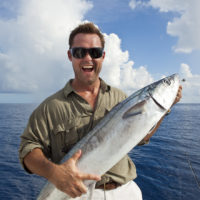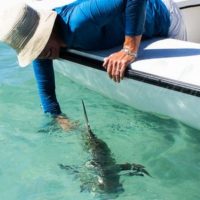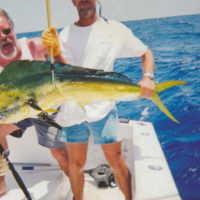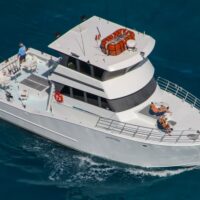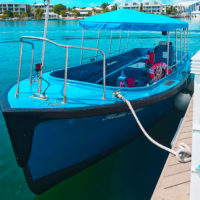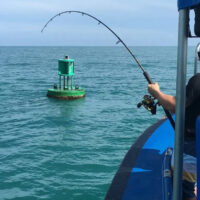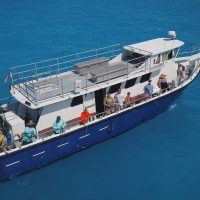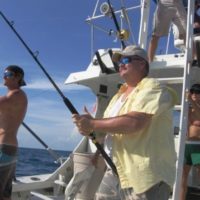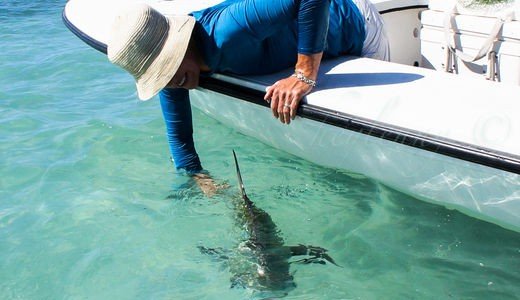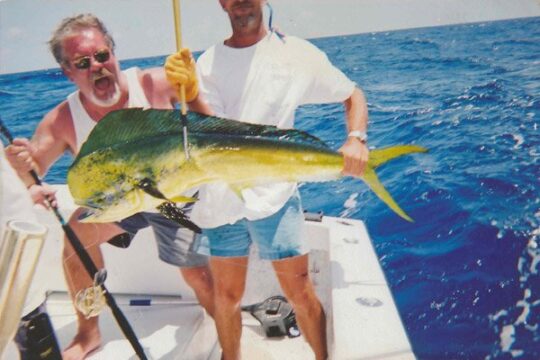Fishing for Bonefish in Key West
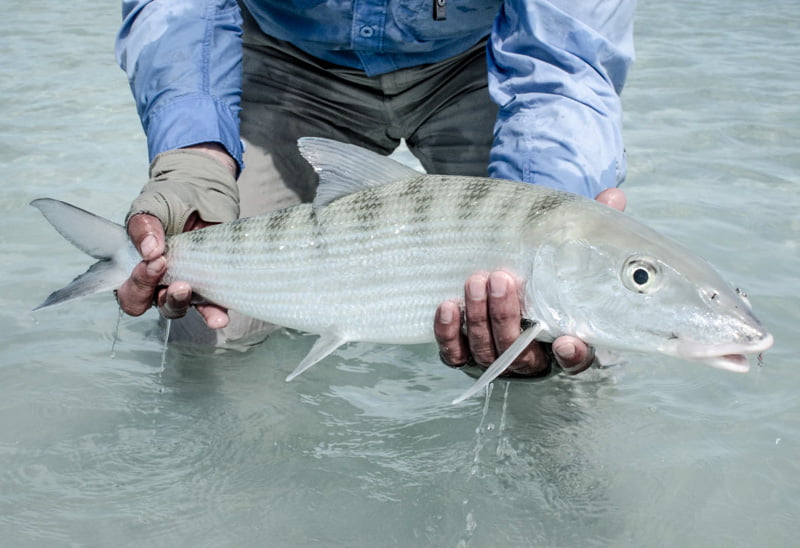
Fishing for Bonefish on the shallow water Flats is one of the classic angling experiences of Key West and the tropics.
Bonefish (Alectis ciliaris) Introduction
(Florida Record 16lb. 3oz.) Bonefish inhabit tropical and temperate waters worldwide. The Bonefish is a slender and round fish, with large specimens being more compressed in shape.
It has a long, conical nose and a mouth that is set back and downward-facing as an adaption to feeding on the bottom. Bonefish have blue-greenish coloration on their backs and bright silver scales on the sides and belly. Dark streaks run in between the rows of scales on the dorsal side of the body. The first rays of the dorsal fin are tall, giving it a triangular shape, and the tail is deeply forked to provide speed and power through the grass beds.
The Bonefish design is considered “perfect”, as their mirror-like scales help them blend in with their surroundings and make it difficult for predators like the Barracuda to see them. They also have keen eyesight and bodies built for powerful bursts of speed in shallow water. Bonefish in the Caribbean and western Atlantic reach a maximum length of about 31 inches and a weight of 13 or 14 pounds, with Floridian and Bahamian fish usually ranging from 4-6 pounds. In contrast, bonefish in Africa and Hawaii may attain weights over 20 pounds.
Bonefish Habitat and Behavior
Bonefish in the western Atlantic occasionally range as far north as New Brunswick, and to the south are found throughout the Caribbean Sea to Brazil. On the east coast of America, they are most plentiful in south Florida, the Bahamas, and Bermuda. Bonefish are a coastal species, and are commonly found on intertidal flats and in mangrove areas, river mouths and deeper adjacent waters. Bonefish thrive in warm waters and in the Florida Keys they prefer shallow grass patches for feeding and protection from predators like Sharks and Barracudas.
Bonefish often travel in schools but may also be found singly or in pairs. Schools of similar sized fish may consist of 4-6 individuals, or may number in the tens or hundreds. Large adult specimens are solitary. Bonefish feed primarily on the flats, entering the shallow water on rising tides and often foraging in less than 12 inches of water. They tolerate shallow, oxygen-poor water by inhaling air into a lung-like air bladder. When Bonefish feed, they use their conical snouts to dig through the bottom material and root up prey. In south Florida, the prey consists primarily of crabs, shrimp, clams, snails, and worms. Larger Bonefish commonly feed on the gulf toadfish. While in motion, schooling Bonefish travel at the same speed and at a constant distance from each other. When feeding, the Bonefish disperse slightly from the school but will reunite if frightened.
Bonefish reach sexual maturity between 3 and 4 years of age, when they are typically between 17 and 19 inches in length. Spawning occurs year round, and in the Florida Keys, Bonefish spawn in deep water where currents can easily disperse the developing eggs and larvae to other locations. Bonefish are less reproductively active during the hotter summer months, while spawning peaks from November through June. Bonefish may live in excess of 19 years.
Fishing for Bonefish
Fishing for Bonefish on the shallow water Flats is one of the classic angling experiences of Key West and the tropics. Experienced guides and specialized shallow-water craft are generally required for successful Bonefishing. However, the time and effort spent hunting this spooky and elusive fish is all worthwhile when the fisherman spots the tails of feeding Bonefish projecting from the surface and meets the challenge of placing a perfect cast to hook up with a fast, powerful fish that is known for stripping reels bare with blazing runs of 50-75 yards.
Fly-fishing is a very popular way to take Bonefish, with shrimp-tipped jigs or shrimp-imitating flies being two successful methods. A stealthy approach and an accurate cast are crucial to getting a hook up without spooking the fish. Bonefish prefer very warm water, so they are somewhat seasonal, with the best fishing occurring from the spring to the fall.

